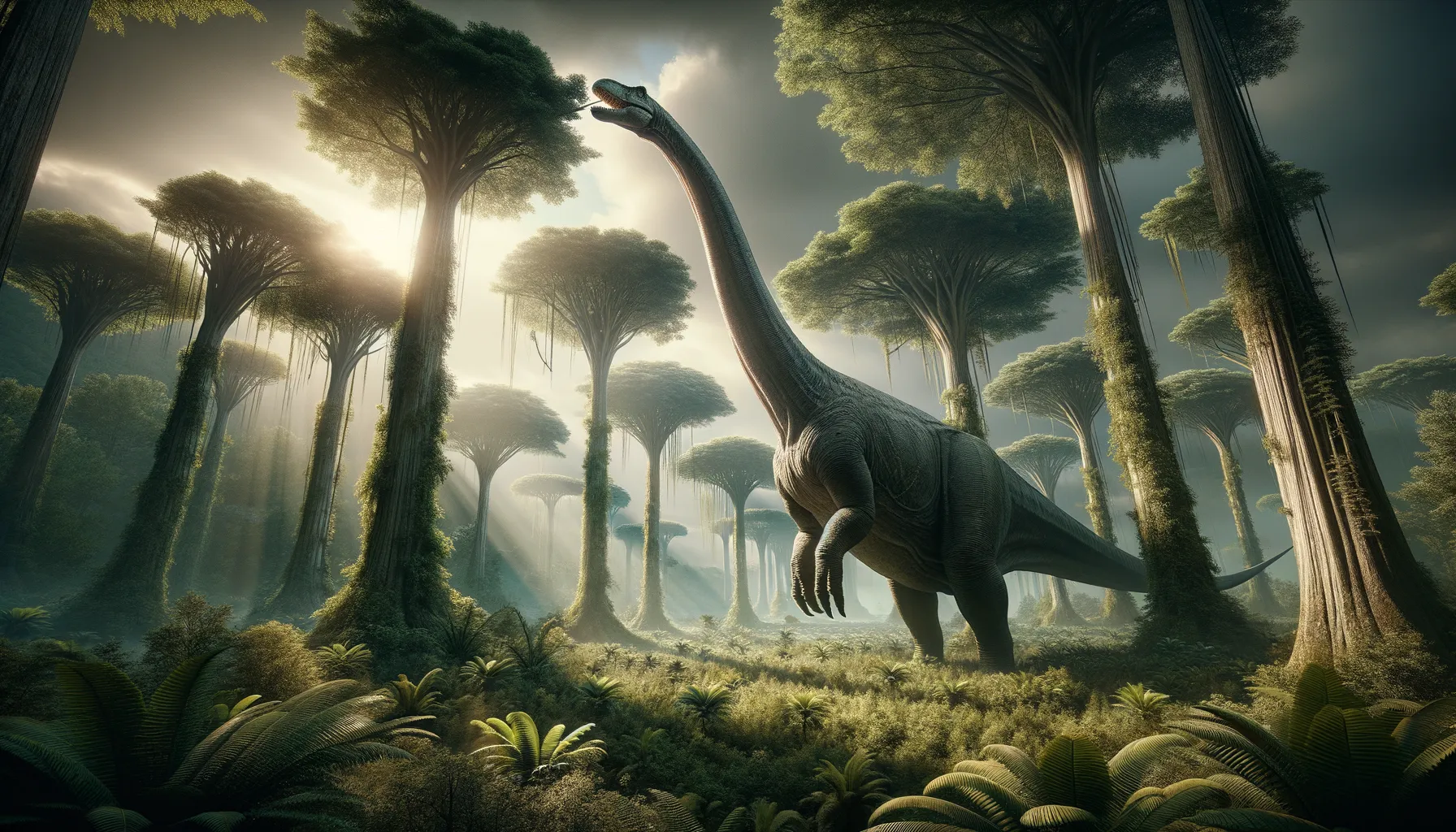
Ferganasaurus
Giant of the Jurassic savannas.
Period
Jurassic
Length
Around 66 feet from head to tail.
Height
Roughly 12 feet tall at the shoulder.
Weight
Approximately 15 to 20 tons.
Ferganasaurus was a giant plant-eating dinosaur that roamed the Earth during the Jurassic period. With its massive size and long neck, it likely fed on tall trees and vegetation that were out of reach for smaller herbivores. Its remains were first discovered in Central Asia, providing crucial insights into the diversity of sauropod dinosaurs. This dinosaur's discoveries have helped scientists understand the evolution and spread of sauropods across ancient landmasses.
Diet
Ferganasaurus was a herbivore, primarily feeding on leaves, soft plants, and possibly ferns. Its long neck enabled it to reach high branches, allowing access to foliage unavailable to smaller dinosaurs.
Hunting
Being a herbivore, Ferganasaurus did not hunt. Instead, its feeding behavior involved grazing on available vegetation. It used its size and reach to access a wide variety of plants in its habitat.
Environmental challenges
Ferganasaurus faced environmental challenges such as competition for food with other herbivores. Seasonal changes could affect food availability, requiring migration or adaptation to find sustenance. Predators also posed a potential threat, particularly for younger or weakened individuals. Environmental shifts, such as climate changes, may have impacted its habitat and food sources.
Speed
Slow-moving due to its large, bulky body.
Lifespan
Estimated to have lived several decades.
First discovery
Discovered in 2003 in Kyrgyzstan.
Fun Facts
- Ferganasaurus was a long-necked dinosaur that lived in what is now Kyrgyzstan during the Middle Jurassic period, about 160 million years ago.
- It belonged to a group of dinosaurs known as sauropods, which are famous for their enormous sizes and long tails and necks.
- Ferganasaurus was named after the Fergana Basin, the region where its fossils were first discovered.
- Unlike some of its giant sauropod relatives, Ferganasaurus was relatively smaller, making it unique in its group.
- The fossils of Ferganasaurus were discovered in the 1970s, but it wasn't officially named and described until 2003.
- As a plant-eater, Ferganasaurus likely dined on lush vegetation, possibly reaching tall trees with its long neck.
- Ferganasaurus shares its name with the mythical creature Pegasus, as part of its full scientific name ‘Ferganasaurus verzilin’ hints at its majestic presence long ago.
Growth and Development
Ferganasaurus likely experienced a slow and steady growth, taking many years to reach full size. Young sauropods might have congregated in groups for protection. Its large size helped protect it from predators once full-grown, though it may have required significant resources to sustain its growth.
Habitat
Ferganasaurus lived in what is now Central Asia, inhabiting areas with vast open spaces and plenty of vegetation. Its habitat consisted of floodplains and forested regions, providing ample food resources for a large herbivore. The climate would have been warm with seasonal variations affecting vegetation.
Interaction with other species
Ferganasaurus interacted with other herbivorous dinosaurs, often competing for food resources. It coexisted with predators and likely lived in herds for protection. Cooperation among herd members would have been crucial for defense against predators and to migrate in search of food.
Natural lifespan
Ferganasaurus likely lived for several decades, similar to other large sauropods.
Reproduction
Ferganasaurus is believed to have laid eggs, possibly in nesting sites. Like other sauropods, it may have laid multiple eggs in a clutch, buried to protect from predators. Hatchlings were significantly smaller than adults and required rapid growth to increase survival odds.
Social behaviour
Ferganasaurus likely exhibited social behavior typical of herd animals. Traveling in groups provided increased protection from predators. Communication between individuals may have been necessary for coordinating movement and protecting the young.
Fossil locations
Fossil remains of Ferganasaurus have been found in Kyrgyzstan, providing the primary evidence for its existence. These findings offer insight into the dinosaur diversity of Central Asia during the Jurassic period. Fossil sites indicate the presence of ancient ecosystems with various sauropod species.
